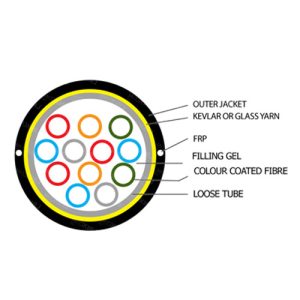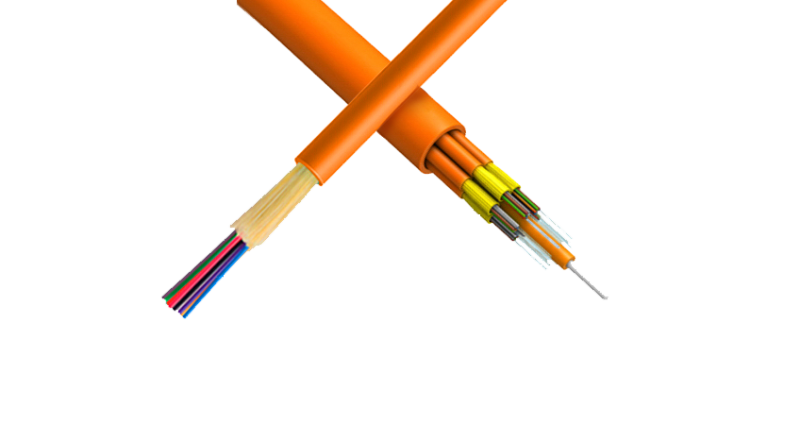Tight-buffered cable was considered best for indoor applications whilst loose-tube cable was best for outdoor applications. Many places avoiding using them as alternatives due to their material features. Despite this, is it still the case?
Both tight-buffered and loose tube are fibre optic cables consisting of multiple fibre counters. Despite some similarities in their construction, their differences outweigh the similarities.
TIGHT BUFFERED CABLES

Tight buffer cable can be either loose tubed or tight buffered. The difference between them is the tight buffered design makes bundle fibres easier to instal and manage. Meanwhile, the loose tube cable is designed with just a single outer jacket, but more flexible when cabling.
Their construction usually consists of 900µm buffered fibre with its core protected by two-layer coating. The first will be a plastic layer, the latter a waterproof one. Because of its construction the core of the cable is never at risk, unlike loose tube which can move about freely. Fibres are usually surrounded by FRP strength members and protected by rugged jackets.
Tight buffered cables fibre count varies between 1 to 144 fibres, however as standard 2,6,12 and 24 fibres are more commonly used.
GEL FILLED LOOSE TUBE CABLE
Loose tube gel filled cable consists of 250µm coated fibres contained in a space which is filled with gel, not occupied by fibre with water-blocking tape gel or tapes. There are several elements inside loose tube cable, each playing an important part.

Loose tube cable consists of 12 strands of fibre but can range between 6 up to 244 fibres. Since the cable is not connected to buffer tubes, the cable can be pulled and stretched without causing breakages from bending or tension.
Loose tube is a term covering a vast number of different configurations. The table below highlights some of the different type of loose-tube fibre optic cable
| TYPE | DESCRIPTION |
| GYXTW | Aerial & Duct, Single, Armor, Waterproof |
| GYXTY | Aerial, Strength Steel Wire, Central Loose Tube |
| GYFXTY | Aerial, FRP Strength Member, Lightning-Proof |
| GYFTY | Aerial & Duct, Non-Metallic Stranded Loose Tube |
| GYTA | Aerial & Duct, Single Armor, Stranded Loose Tube |
| GYFTY53 | Direct Burial & Duct, Single Armor, Double Jacket |
| GYTA53 | Direct Burial & Duct, Double Armor, Double Jacket |
| GYXTC8Y | Aerial, Central Loose Tube, Figure 8 Self-Supporting |
| GYTC8S | Aerial, Single Armor, Figure 8 Self-Supporting |
TIGHT VS LOOSE TUBE
Tight-buffered is more suitable for indoor use since it’s sturdier than loose cable. However, they are also more expensive than loose tube and hold less fibre despite their similar outer diameter. This is due to Tight Buffer using 900µm and loose tubes 250µm. Gel filled loose tube is best used for outdoor use, but since it’s a nuisance to be spliced and terminated, it’s not the first choice for indoor/outdoor applications.
SUMMARY
Tight buffered cable and loose tube cable are both excelled rugged cables. Tight buffer is usually used for moderate length indoor and indoor/outdoor applications whilst loose tube is for long distance outdoor applications.

